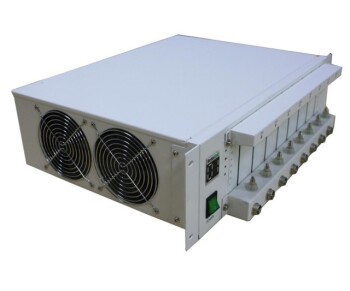Elemental analyzers are essential tools in many scientific fields. They can identify and measure the elemental composition of samples. These analyzers use various spectroscopic and chromatographic techniques to provide detailed analysis. This helps in research, quality control, and compliance. The latest advancements in portable elemental analyzers have made real-time, on-site analysis more accessible and efficient. This overcomes the limitations of traditional laboratory-based methods.
5 Key Points Explained: What Elemental Analyzers Do

1. Definition and Function of Elemental Analyzers
- Definition: Elemental analyzers are instruments designed to determine the elemental composition of a sample. They identify both the presence of elements and their quantities.
- Function: These analyzers can perform both qualitative and quantitative analyses. In some cases, they can even determine the isotopic composition of elements.
2. Techniques Used in Elemental Analysis
-
Spectroscopic Methods: These include UV, AAS, AFS, AES, ICP-MS, and XRF. Each method uses different principles to detect and measure elements.
- UV/Visible Spectrophotometry: Utilizes Beer's law to measure the absorbance of light by the sample. This is proportional to its concentration.
- Atomic Absorption and Fluorescence Spectroscopy: Based on the absorption or emission of light by atoms. This is useful for trace metal analysis.
- Atomic Emission Spectroscopy: Measures the light emitted by atoms when they return to their ground state from an excited state.
- ICP-MS and XRF: ICP-MS is used for isotope analysis and quantitative element analysis. XRF measures the fluorescence emitted by elements when excited by X-rays.
- Chromatographic and Mass Spectrometric Methods: These include gas and liquid chromatography. Often coupled with mass spectrometry for detailed component analysis.
3. Applications of Elemental Analyzers
- Widely Used in Various Fields: From chemistry and materials science to environmental and food testing, elemental analyzers are indispensable. They help in identifying and quantifying elements in samples.
- Quality Control and Compliance: Essential in industries like mining, pharmaceuticals, and manufacturing. They ensure product quality and regulatory compliance.
4. Advantages of Portable Elemental Analyzers
- Portability and Versatility: Portable analyzers are compact and can be used in various settings. This includes remote areas and industrial sites, providing real-time data.
- Speed and Efficiency: They offer rapid analysis, reducing the time and cost associated with traditional laboratory methods.
- Non-Destructive Analysis: Many portable analyzers allow for non-destructive testing. This preserves the integrity of the sample.
5. Challenges Addressed by Portable Analyzers
- Overcoming Traditional Limitations: Portable analyzers address issues like high cost, time consumption, and the need for specialized personnel and equipment.
- Real-Time Decision Making: In industries like mining and manufacturing, real-time elemental data can significantly influence operational decisions and efficiency.
In conclusion, elemental analyzers, especially portable ones, represent a significant advancement in analytical technology. They offer versatility, efficiency, and real-time data crucial for modern scientific and industrial applications.
Continue exploring, consult our experts
Immerse yourself in cutting-edge analytical technology with KINTEK SOLUTION’s elemental analyzers. Experience unparalleled precision and convenience, streamlining your research and quality control processes. Don't miss out on the benefits of portable, real-time analysis. Contact KINTEK SOLUTION today to revolutionize your laboratory’s capabilities and elevate your results!











